 |
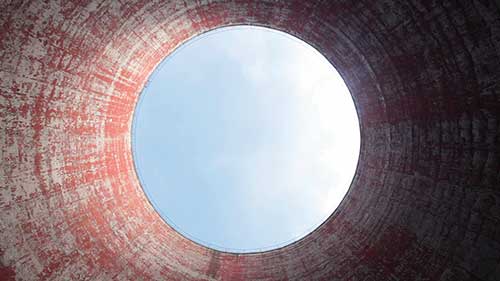 |
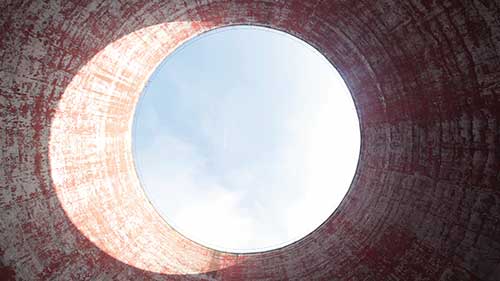 |
| Window 12.31, frame from film |
| By definition "topography" is the configuration of a surface and takes into account its shape, presence and the mutual positioning of objects and characteristic points, while a relation - in mathematical terms - is any subset of the Cartesian product of sets. Intuitively it means a certain connection between the elements of those sets. It is the relation between myself, reality, an instrument, both objective and subjective time and the viewer. I observe reality - its character and shape, as well as my relation to it, I choose an algorithm of behaviour that follows my experience of this space and its perception. As a cognitive process it works on two levels. On the sensory level it has an automatic character and is conducted by the organs of the senses, but on another level we attribute a deeper meaning to an observation. I compose a task for my tool or instrument, a task that is both the result of analysis and intuition - as if I were programming my new sense - and confront it with reality. Then I collect the recording the tool has made - the memory of my instrument - and build an image that reflects this mutual relation. Reality is not given - it is produced, created. What shapes it is the way in which we see it and the images of it we produce. The image opens onto the experience of the viewer and takes him farther, through my experience, beyond it, beyond documentation. The topography of relation is supposed to expose this interdependence. |
Ewa Ciechanowska
|
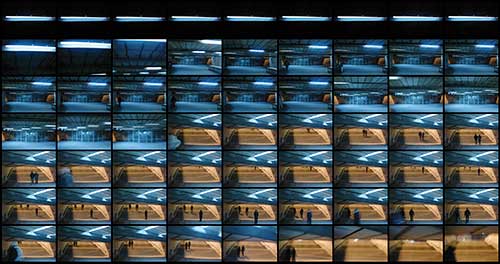 |
|
Map 2.35, from the series Map of Time |
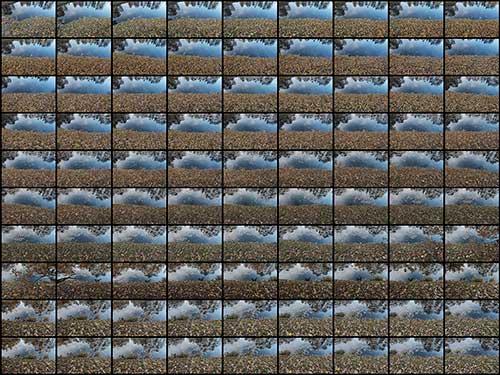 |
|
Map 7.45, from the series Map of Time |
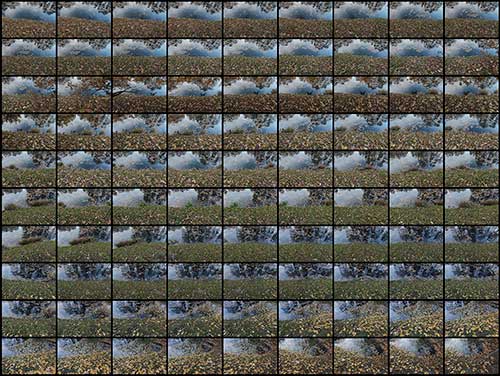 |
|
Map 7.28, from the series Map of Time |
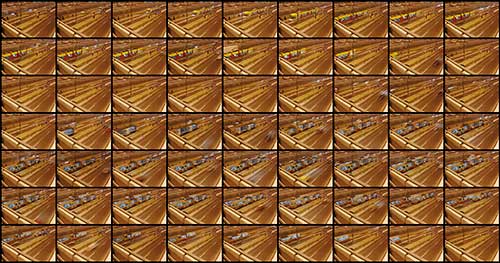 |
|
Map 6.57, from the series Map of Time |
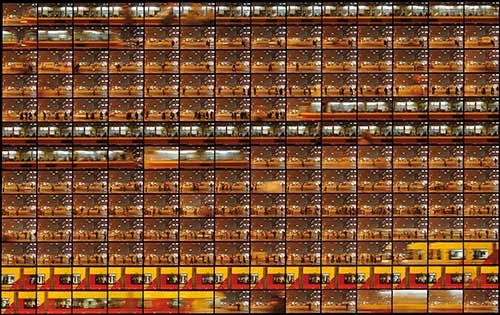 |
|
Map 11.30, from the series Map of Time |
| Perceivers of Time |
Nothing is in the mind except what was first in the senses
John Locke
|
|
Photography has been an image of time since its own very beginning. Photographic registration in the classical approach is an image of time that has been stopped in its tracks. An artist, however, using photography gets ahead of time; he is always in the avant-garde of time. If he wants to photograph something, he plans the future. That is why he can be the cause of certain actions, he can shape and construct reality in his own manner. It is precisely this aspect that is most interesting in photography - the combination of the future and the past on the plane of the present. Another specific aspect of photography is making time believable. The mechanism of the camera "cuts" time. On the other hand our consciousness and the feeling of time is very inconcrete. We become complete, live and exist on the plane of time. We are unable to stop time which flows even when we believe that nothing is going on and that time will keep flowing without us. The only common plane of our identification with photography is our memory. Looking at a photograph always sets off memories.
Can a photograph be an image that is not conditioned by time, can photography show reality without the stopping of time? Quite so, for example film is a work of art that evolves in time. But time in film and other genres like music, theatre and prose is an image of fictional time. Works of these genres possess two aspects of time - reception conditioned by time and an image of fictional time that is closed on the scene of the action or in the plot of the given work. In spite of the fact that a picture as a work of art, like a painting, is similar to paintings-documents of a given period, (or sculptures), it has a certain value, exclusively typical for photography. Photography is a concrete piece of time while a painting is a compilation of the painter's own time. Photography "perceives" time in a way we cannot follow. David Hockney demonstrated it in his photographs. We perceive reality in shorter or longer periods of time. Photography practically "perceives" reality beyond our powers of perception. For example photographs of quick movement or long exposition time that "dissolve" moving objects to resemble phantoms. Time in photography can be shown in two ways: time stopped and time multiplied, for example represented by the multitude of pictures formed into sequences. In both cases we always touch ready-made images, presented in the space of a gallery, in the form of objects or projections. The viewer must relate to them, accept and possibly understand them. In most cases the viewer begins to identify with these images, in other words, he is absorbed by them. However, what happens when the image is not very obvious and rather inconcrete? When it does not show details, for example foregrounds and backgrounds? What happens when looking at a photograph we do not perceive ready-made and in their own way easy images? Ewa Ciechanowska, in her works presented at the FF Gallery, tries to answer these questions in a very original way. What makes her propositions exceptional among many others? In my opinion her photographs are not only the solution of a purely aesthetic problem or a presentation of a novel way of seeing. Ciechanowska's photographs are a part of a whole open creative process, not closed "from here to there". Of course almost everything in art begins with observation and the concept of a work. But thanks to photography art has erased the boundaries of the act of creation. Creation in photography is closer to a page torn from a book of a never-ending work of being than a monument of the given period like a painting or any other artefact. Ewa Ciechanowska does not "catch" points of time in the trap of a black box, in a cage for images, like most photographers do. Reality "fluently enters" Ciechanowska's photographs, changing only the tracks of its endless run of being, of duration. There is no stopping, no stillness and no immobility. It does not end even in the ready work - it runs the rest of the distance in the mind of the viewer-receiver of the images. Stages in the artistic development of Ewa Ciechanowska remind me a little of natural evolution where badly adapted organisms die out and those who are stronger continually change their appearance, shape and mode of existence. Her first meaningful series entitled The Reportage of Emotions (not shown at FF Gallery), as the authoress says herself, refers to "the registration and preserving of memories, their deformation and transformation that takes place in the process of memorizing and remembering them. These images were "glued together", edited and combined from many separate photographs in such a way that they resembled a kind of panneau. Ciechanowska says that these photographs are memory activators. I think that these photographs go even farther, they not only activate but annex our memories, change those that are inconcrete. They change blurry images into photographs. Later we cannot be certain if looking at them we see a time past or only a photographic image of that time. The whole set is exceptional because every picture is indeterminate and not very precise. But this kind of narration shows the nature of our memory all the better. There is apparent chaos of images, both in the plastic sense and in the sense of their meaning. Like in the photographs by Anne Arden McDonald entitled Diana Camera Work from the years 1995 - 2000. Our memory is also something like a not very logical string of images. The series presented at the current exhibition called Timescapes from 2007 is more refined in terms of form that has to do with the way of presenting time. Before taking pictures, Ciechanowska had a preconceived concept of how to behave in landscape with a photographic camera. During the actual taking of the photographs there was a mutual relation between her emotions and the photographed place. Each of the photographs is a separate record of an intentional disturbance in the process of photographic registration, disturbance caused by the artist. Long exposition time and the intuitive reaction of the authoress to landscape deformed the mirror image of nature. Ciechanowska writes that this deformation took place suddenly, conditioned by her presence. This series confirms an opinion that a photograph is not a document but merely its mechanical model that makes us think that we are in contact with authentic reality. Three elements have been mixed together in these pictures: place, time and movement. The objectivity of registration, so often identified with photography, was rejected by Ciechanowska. We should perceive these pictures of hers by means of the senses, not only the intellect. Photography is simply an image, a coded message, therefore we should not succumb to its literal illusiveness, as we should not look only for the surface, literal meaning. It is an opposite pole of perceiving reality that influences our unconscious experiences. Looking at those photographs we activate our senses first, and the mind later. An interesting result of such a way of photographing is the fact that we reject the mystification of a photographic document because the reliability in the foreground is based on our senses and emotions, not on the intellect. Recent photographs by Ewa Ciechanowska are a series composed of ten images called The Topography of Relations. At first sight they are film frames combined into one image. Multiplied photographs, taken shortly one after another, in the time set by the programme of a photographic camera. Ciechanowska reaches the core of the medium of photography, but also its history from which she, for example, recalls Muybridge. But is it only that? Her photographs from this series could be called a screen of time where the borders of different disciplines are crossed, which leads to the deconstruction of our previous impressions. Ciechanowska has marked out new fields of perception and interpretation for the potential viewer of these pictures. At the same time the photographs are not the end of the process of perception as an act that crowns the work, since this process begins to subsist in the mind of the receiver. Permanent continuity without end, without stopping time. The meaning we are able to read does not end with a neat definition or a moral message. It is rather like a permanent dialogue. Ciechanowska herself describes this series saying that "an image opens onto the viewer's experience and goes with him further, through my experience, beyond it and beyond documentation." We can compare the role of the authoress to a medium balanced between objective reality and the mind of the viewer. Photography is ideally suited to play such a role because it possesses the features of an objective instrument, but which is able to receive the brand of the artist. Following this road the viewer must go through the sphere of perception of the authoress and her sensual feeling of reality, through her topography of internal landscape and the motoric reactions of her body. Ciechanowska escapes the role of the constructor of a closed image. She points to sensory and motoric perception when the receiver by means of its practical performance during photographing is persuaded to change his own observations and follow her presence. Ciechanowska, who shows the passage of time in this endless work which is best suited by the name of "the screen of time" (i.e. which is the kind of picture that shows the time on a plane as points which we can put together in our minds like a jigsaw puzzle), also used it in another medium, in the work counted as a piece of video-art and titled S1 366 (2008). This apparently different sphere of artistic expression confirms that Ciechanowska's interest lies in the domain of authorial beauty shown in a seemingly objective, mechanical video registration. Putting the viewer in a state of "trance" by means of combinations and noise of the time narration in the picture, which resembles a flickering road, reminds me of her most recent photographs from The Topography of Relations. We have to do here with a similar way of looking for a means of expression, but also for one's own place in art. Ciechanowska rejects the very experience of the end and rejects the closing of her work. Her artistic evolution is marked by the fact that there is no typical climax at the end of her works. And one can say that the process of "awakening from a trance" is probably the most interesting feature of her art. |
Grzegorz Przyborek Łódź, November 7th 2010 |
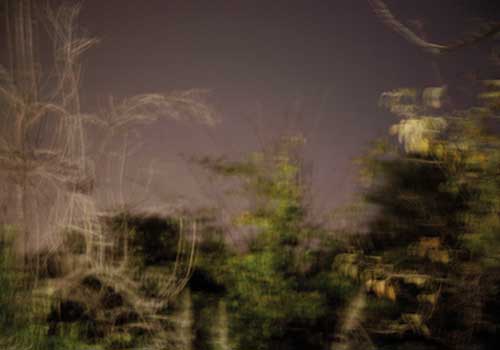 |
| Timescape 1 |
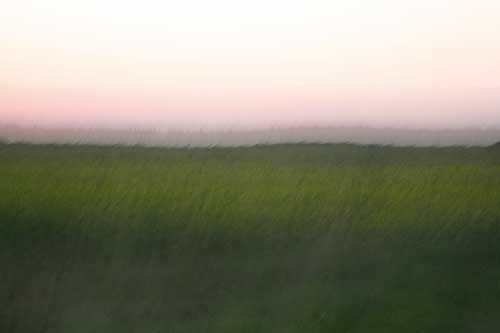 |
|
Timescape 1 |
Copyright ©2010 Galeria FF ŁDK, Ewa Ciechanowska, Grzegorz Przyborek |